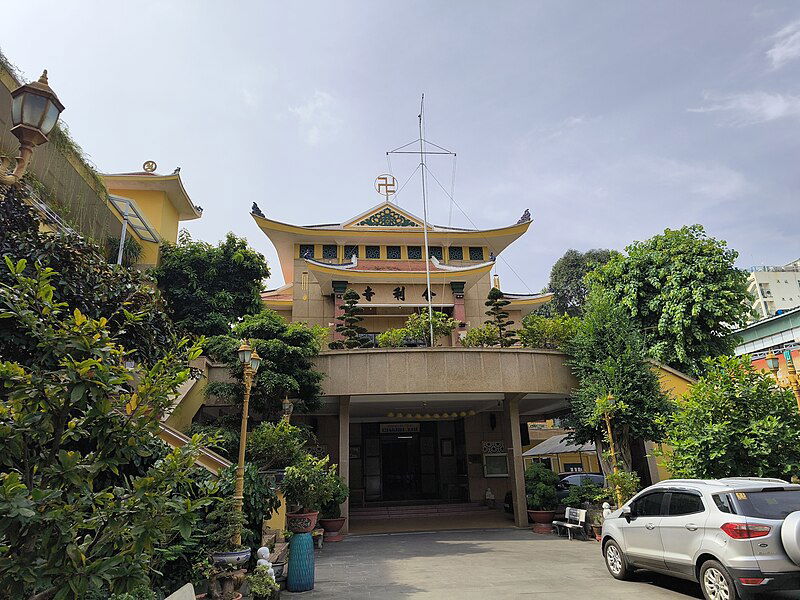How to Visit Saigon's Temples and Pagodas Respectfully
Saigon is the largest city in Vietnam, and it is home to roughly 10 million people, making this city the most densely populated city in Vietnam. Saigon is also known as Ho Chi Minh City, the name change took place to honour a revolutionary Vietnamese leader who had worked hard and helped Vietnam gain independence in 1945 from French and Japanese colonisation attempts. Although Saigon has evolved and developed itself to keep up with the modern world, the traditional roots can be seen in the temples and pagodas, these locations offer glimpses into the local culture, spirituality, and community life.
Famous Temples: The Most Important and Impressive Religious Sites
Saigon is home to a large collection of beautiful and intricately designed temples and pagodas, these religious sites reflect the rich heritage of Vietnam by harmoniously blending Buddhist, Taoist, and Chinese influences, which is on display through the various forms of architecture and design systems.
Jade Emperor Pagoda:
This is one of the most iconic cultural sites in Saigon, it was built in the early 20th century by the Chinese community in Saigon as a site that is dedicated to the Jade Emperor. This location has a large volume of Chinese design elements etched into the structure itself, the temple is fondly known for its vibrant red interior, thick incense smoke, and intricate carvings of deities and mythical creatures. This temple is easily accessible since it is only ten minutes away from popular riverside hotels in Saigon, and these hotels offer high levels of amenities and services reflecting the warmth and hospitality of Vietnam. Although taking a taxi from hotels such as Oakwood Hotel and Apartments Saigon is easier, walking to the temple is the recommended option because it will help you experience the culture of the city more intimately.
Xa Loi Pagoda:
This temple is the largest pagoda in Saigon and is known for its striking architecture and calming presence which is enhanced further through its bell tower, serene gardens, and a statue of the Buddha enshrined in the main hall. This pagoda was built in 1956 as a symbol of resistance against the oppressive regime of President Ngo Dinh Diem, and this resulted in this pagoda becoming a gathering point for almost every Buddhist in Saigon.

源義信, 2023-12-10 Xá Lợi Pagoda, Saigon 17, CC BY 4.0
Temple Customs: Appreciating the Rules and Rituals
The temples and pagodas in Saigon are places that are reserved for devotion, reflection, and community events, leading to the development of a strong bond between the religious sites and the local communities. One of the most important local customs is to bow before entering the main hall of the temple when passing by statues of deities or mythical creatures, this displays a large volume of respect toward the temple. When lighting incense, avoid placing the incense directly on the altar or any sacred objects, as this can be disrespectful, instead, follow the guidance of the locals and place the incense in the designated holder carefully.
Temple Culture: Understanding the Development of Local Culture
The temples and pagodas in Saigon are some of the best places to immerse yourself in and understand the local culture and the history surrounding the importance of each religious site. When experiencing the culture and heritage of these locations, you can learn more about the spiritual significance of these locations, which will help deepen your connection to the local culture. Temples and pagodas in Saigon go beyond the regular services of a temple by acting as a community centre that hosts events which will help the local community to socialise and seek guidance from elders.
Temple Rules: Do’s and Don’ts
The temples in Saigon have rules and etiquette that must be followed, these are usually noted down on a sign but if these are not clear enough then you can ask the locals or the temple caretakers.
Do’s:
Because religious sites are peaceful and tranquil, maintaining a quiet and respectful tone is essential when speaking within the premises. In addition to this, it is important to wear modest clothing and cover the shoulders, elbows, and knees.
Don’ts:
Do not touch or consume any offerings placed by devotees, such as food, flowers, or incense. Many temples in Saigon permit taking photographs on the premises, however, before taking any pictures consult a local and confirm whether it is permitted.
